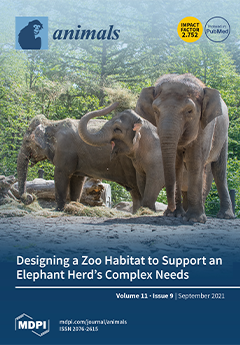A total of 318 nasal and rectal swabs were collected from 159 apparently healthy camels (
Camelus dromedarius) randomly selected from five regions in southern and central Tunisia and screened for
Staphylococcus aureus carriage.
Staphylococcus spp. were recovered from 152 of 159 camels studied (95.6%) and in total 258 swabs (81%) were positive. Among these isolates, 16 were coagulase positive
Staphylococcus (CoPS) (6.2%) and were characterized by biochemical and molecular tests as
S. aureus. These were isolated from 14 camels (8.8%) with co-carriage in nasal and rectal mucosa by two camels. All
S. aureus isolates recovered were methicillin-susceptible Staphylococcus aureus (MSSA) and were characterized by
spa typing and PFGE. Three different
spa types were recovered: t729, t4013 and a
spa type newly registered as t19687, which was the most common. PFGE analysis revealed seven different patterns and these were characterized by MLST, which revealed five different sequence types (ST6, ST88, ST3583 and two new sequences, ST6504 and ST6506). All isolates harbored different virulence genes, including
hld, encoding delta hemolysin;
lukE–
lukD, encoding bicomponent leukotoxin LukE–LukD; the
clfB gene, encoding clumping factor B; the
laminin gene, encoding laminin-binding protein; and
cap8, encoding capsule type 8. Fifteen isolates harbored hemolysin beta (
hlb) and fourteen encoded hemolysin alpha (
hla) and hemolysin G2 (
hlgv). Adhesin factors, including
clfA and
fnbB, were detected in five and four isolates respectively. Binding proteins, including collagen (
cbp) and elastin-binding protein (
ebp), were detected in two
S. aureus isolates while fibrinogen-binding protein (
fib) was identified in four isolates. This study provides the first set of genotyping data on the population structure and presence of toxin genes of
S. aureus strains in Tunisian camels.
Full article






